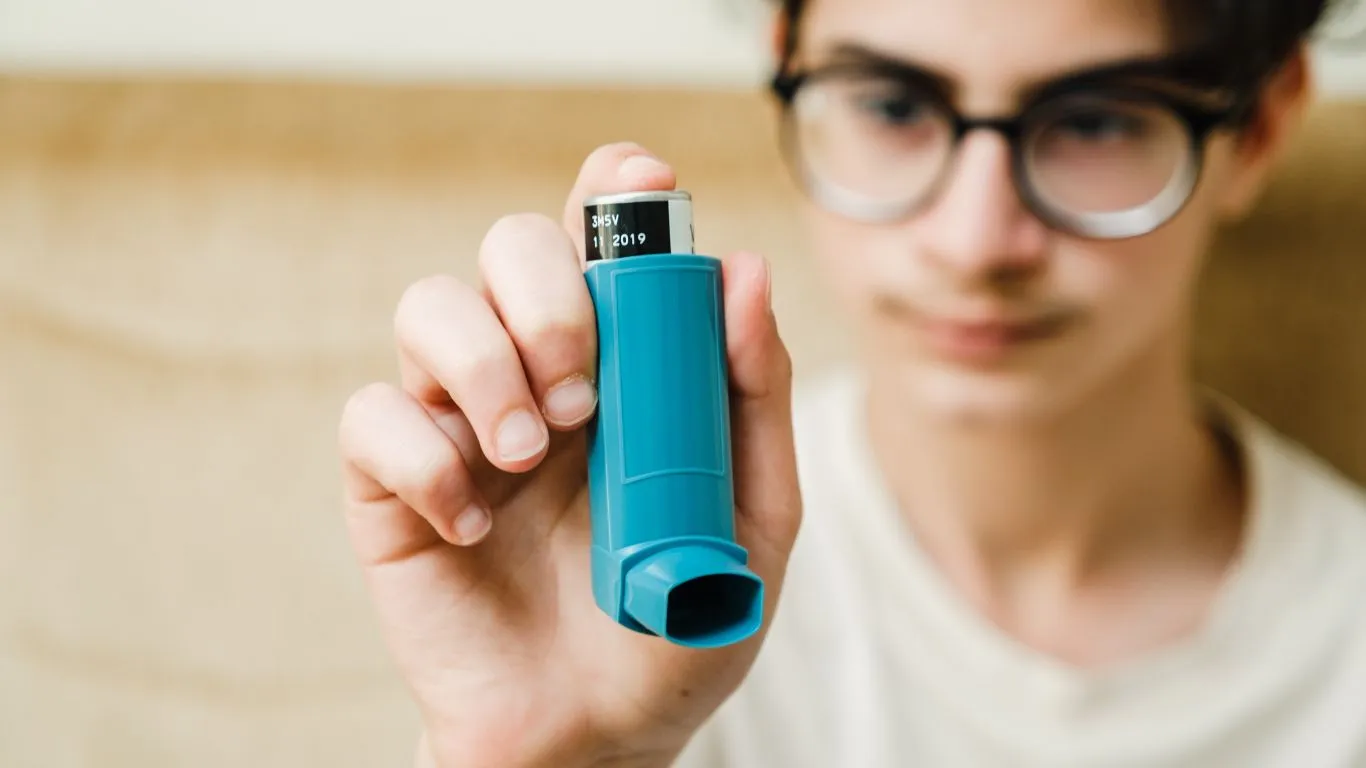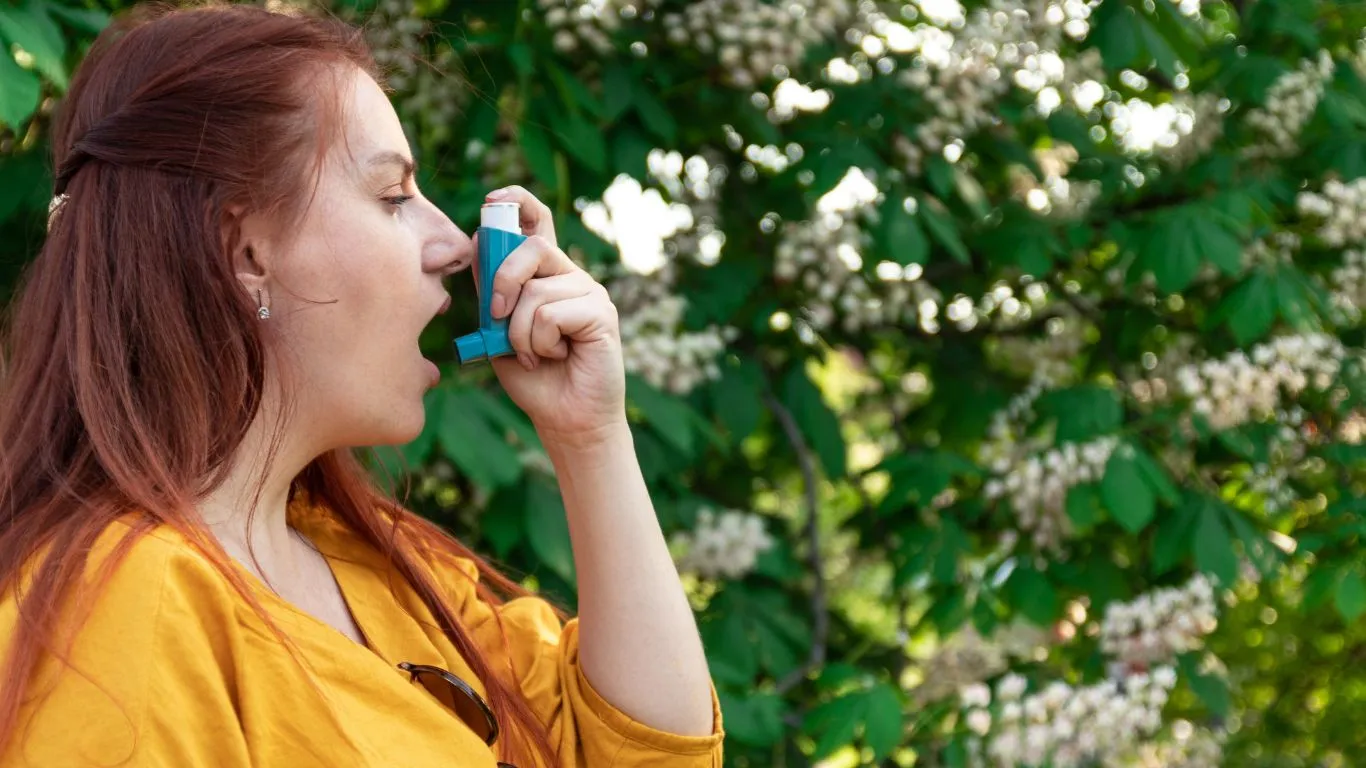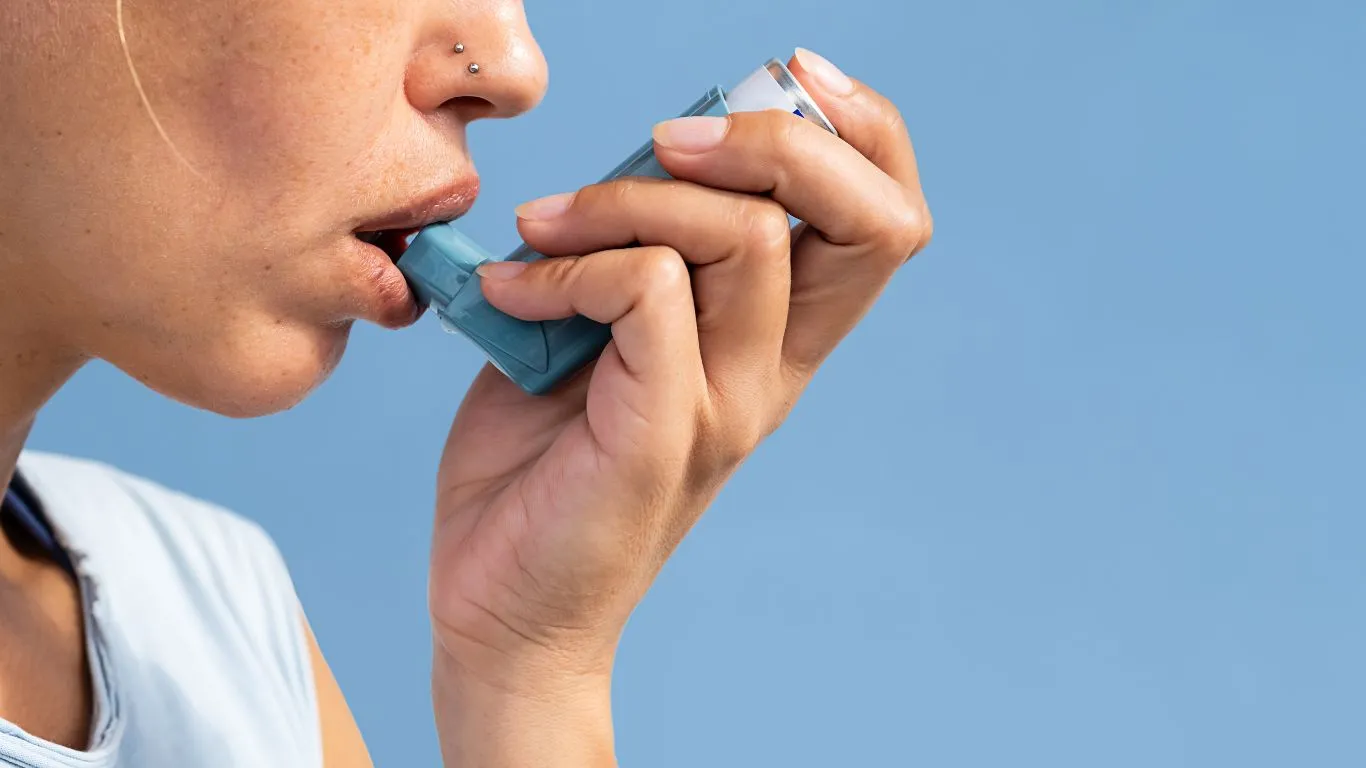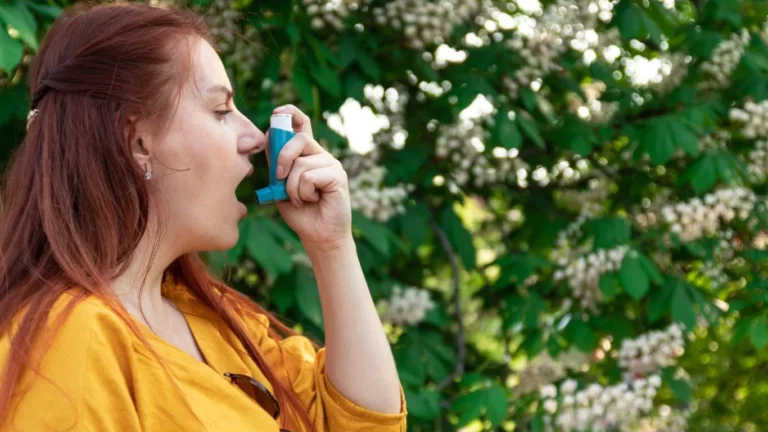Best Breathing Patterns During Asthma Attack That Actually Work
Let’s be real for a second—when you’re in the middle of an asthma attack, thinking clearly about anything, let alone your breathing, feels next to impossible. I’ve worked with hundreds of patients as a pulmonary nurse practitioner, and one of the most common things I hear after they stabilize is, “I didn’t know how to breathe the right way during the attack.” That’s why I want to talk about something that doesn’t get enough attention: the best breathing patterns during asthma attack episodes. Trust me, knowing how to control your breathing in the heat of the moment can make a huge difference. I’ve seen it firsthand.
Why Your Breathing Pattern Matters During an Asthma Flare-Up

When asthma tightens its grip, your airways start to narrow and fill with mucus. That feeling of chest tightness, wheezing, and gasping? Yep—that’s the result. But here’s something most people don’t realize: how you breathe in those moments can either make it worse or give you some control back. The panic usually leads to fast, shallow breathing, which actually triggers more symptoms. I always tell my patients, “Slower is better, and nose over mouth when you can.”
What Happens Physically During an Asthma Attack
Before we dive into techniques, let’s break down what’s really going on in your lungs during an attack. In a nutshell:
- Bronchial tubes become inflamed and swell
- Muscles around the airways tighten (that’s the bronchospasm)
- Excess mucus clogs things up even more
Trying to force air through all that congestion leads to over-breathing, or hyperventilation. That’s why learning the best breathing patterns during asthma attack moments is so valuable—it’s like giving your lungs a little space to function again.
Understanding the “Controlled Breathing” Approach

In my clinical experience, one of the most empowering things I can teach patients is how to use controlled breathing. It’s not a magic fix, but it can help you feel less helpless. These methods slow the panic response, regulate oxygen and CO2 exchange, and even reduce the feeling of air hunger.
Diaphragmatic Breathing (a.k.a. Belly Breathing)
This is hands down one of the most effective techniques. Instead of letting your chest rise and fall, you focus on your belly. It encourages full oxygen exchange and helps you slow down. Here’s how I coach my patients through it:
- Sit upright or lean slightly forward—comfort is key.
- Place one hand on your chest, the other on your belly.
- Inhale through your nose slowly—feel your belly expand, not your chest.
- Exhale through pursed lips like you’re blowing out a candle.
- Repeat, aiming for a calm rhythm.
This breathing pattern gives you control when everything else feels chaotic. One of my teenage patients once said it helped her “ride the wave” instead of being pulled under. That stuck with me.
Pursed-Lip Breathing: The Secret Weapon
Another go-to in the heat of an asthma attack. I often teach this one to older patients who tend to feel air-trapped. Pursed-lip breathing slows down exhalation, keeps airways open longer, and reduces shortness of breath.
Here’s how:
- Inhale slowly through your nose (count to 2)
- Exhale slowly through pursed lips (like whistling), counting to 4 or more
When I practiced this with one patient in her 60s who’d had asthma since childhood, she called it “a reset button.” That’s the kind of simple, powerful tool I wish more people knew about before they were in crisis mode.
Common Mistakes to Avoid While Breathing Through an Attack

Okay, so we’ve covered what works. But let’s talk about what doesn’t. In the middle of an attack, panic takes the wheel. And that leads to some common (and totally human) breathing mistakes. Here are a few things I always tell folks to steer clear of:
- Gulping air – This just adds tension and worsens hyperventilation.
- Mouth breathing exclusively – The nose filters, warms, and moistens air. It’s your lung’s best friend.
- Slouching – Posture plays a role. Upright or tripod positions keep your airways more open.
- Holding your breath – A natural reflex in panic, but it starves your brain of oxygen.
My golden rule? Slow is smooth, smooth is calm. That’s the mindset I teach in every asthma education session. And honestly, it sticks.
How to Practice Breathing Techniques Before an Asthma Attack Hits

If there’s one thing I’ve learned working in pulmonary care, it’s this: the middle of an asthma attack is not the best time to learn a new skill. That’s why I encourage all my patients—young or old—to practice breathing patterns daily, even when they feel fine. Think of it like muscle memory. Your body will go into autopilot during stress, so let’s train it with the right moves.
Here’s a simple daily routine I recommend to my patients:
- Morning reset: Start your day with 5 minutes of diaphragmatic breathing.
- Evening wind-down: Do 5–10 minutes of pursed-lip breathing before bed—it’s incredibly relaxing, too.
- Trigger-prep: If you’re going to be around allergens, cold air, or exercise, do a few calming breaths first.
And remember: consistency builds confidence. One of my patients, a middle-aged teacher, told me practicing every morning gave her peace of mind before walking into a classroom full of kids (and potential triggers!).
Creating a Breathing-Friendly Environment

Okay, we’ve talked a lot about what to do with your body during an asthma flare, but let’s not forget the space around you. Your environment can totally make or break your breathing game.
Asthma-Friendly Habits That Support Breathing Patterns
Here’s what I often share with patients who want to build a “breathing safe zone” at home:
- Keep airways clear—Dust and dander build up fast. Use a HEPA filter and clean weekly.
- Avoid strong scents—Scented candles, air fresheners, and cleaning sprays can be sneaky triggers.
- Use a humidifier (with caution)—Moist air helps, but too much can promote mold. Keep it balanced.
- Declutter your space—Less stuff = less dust. And it’s surprisingly calming!
I’ve had patients tell me just changing their bedding and removing carpets made a huge difference in their nighttime breathing. Small tweaks add up fast.
Positioning: A Game Changer for Airflow
We tend to overlook posture, but your body position during an asthma episode can help (or hurt) your airflow. Some effective positions I teach include:
- Tripod position: Sitting, leaning forward, elbows on knees—it naturally opens up the lungs.
- High Fowler’s position: Sitting fully upright in bed, legs dangling if possible.
- Standing and leaning forward slightly—Works well if you’re outside or can’t sit.
I once worked with a long-distance runner who swore by the tripod stance during flare-ups post-training. He said it gave him “just enough space” to breathe until his meds kicked in.
Knowing When Breathing Techniques Aren’t Enough

Let’s keep it honest—breathing techniques are supportive, not curative. They’re part of the toolbox, not the whole fix. As much as I want every patient to feel empowered, it’s also crucial to know when it’s time to reach for your rescue inhaler or seek medical help.
Red Flags to Watch For During an Attack
If you or someone you love is showing these signs, stop the breathing exercises and call for help:
- Struggling to speak more than a few words without gasping
- Blue or gray tint around lips or fingertips
- No improvement after using a rescue inhaler
- Fast-worsening symptoms over minutes
One mom I worked with told me she hesitated to call 911 because she wanted to “wait and see if the breathing techniques worked.” Please don’t wait—techniques support the process but aren’t a replacement for your asthma action plan.
Use the Breathing Tools Alongside Your Asthma Plan
This is where E-E-A-T (Experience, Expertise, Authoritativeness, Trustworthiness) really matters. I’m not just some voice on the internet—I’ve seen these techniques work for real people with real asthma, and I know their limits. Breathing patterns help reduce panic, lower stress, and improve oxygen exchange. But they’re just one piece of a full plan that should include:
- Your quick-relief meds
- Your controller meds (if prescribed)
- A personalized asthma action plan
- Regular check-ins with your provider
Pairing the best breathing patterns during asthma attack with medical management is where the real magic happens. I’ve seen kids, teens, adults—even seniors—get better control over their symptoms by combining both.
Teaching Kids and Teens the Best Breathing Patterns During Asthma Attack

Let’s talk about the younger crowd for a second. I’ve worked with plenty of kids and teens managing asthma, and honestly, they’re some of the quickest learners when it comes to breathing techniques—especially when you make it interactive. But it takes a different approach.
With younger patients, I like to turn breathing practice into a game. One little guy, about 7 years old, loved pretending he was blowing up an imaginary balloon with his pursed lips. We’d count together, slow and steady. He’d giggle through it—but he learned! Another teen told me she syncs her belly breathing to music during study breaks. Whatever gets them engaged, right?
Simple Tools That Help Kids Stay on Track
- Visual timers: Great for paced breathing practice.
- Stuffed animals: Let them rest it on their belly and watch it rise and fall.
- Breathing videos: There are some super calming ones on YouTube made just for asthma and anxiety.
Kids thrive on routine. If breathing techniques become part of their daily rhythm—like brushing their teeth—they’re way more likely to use them automatically when symptoms kick in.
Mindfulness & Stress Reduction: Hidden Allies in Asthma Control

Here’s something not talked about enough: stress is a major trigger for asthma attacks. I’ve seen patients spiral into an attack just from anxiety alone. So while we’re all focused on breathing patterns and medication, we also need to talk about calming the mind.
Why Mindfulness Matters
Practicing breathing techniques isn’t just about oxygen—it’s about focus. Mindfulness-based breathing lowers cortisol levels, keeps the nervous system calm, and makes your whole body less reactive.
I had a college student once tell me that her asthma attacks used to hit during finals. Once she added 10 minutes of mindful breathing and meditation to her morning routine, things started to shift. Her flare-ups dropped. She even began using her rescue inhaler less.
Easy Mindful Practices to Incorporate
- Box breathing: Inhale for 4, hold for 4, exhale for 4, hold for 4. Repeat. Super grounding.
- Body scan meditations: Helps you notice tension and let it go before it builds.
- Guided audio breathing apps: I often recommend Calm or Insight Timer to my patients.
The cool thing is, these techniques support the same muscles and rhythms we use for the best breathing patterns during asthma attack—so it’s all connected. Breathe better, feel calmer. Feel calmer, breathe better. Win-win.
Putting It All Together: Build Your Personalized Breathing Plan
Now that we’ve gone through the science, the techniques, and the day-to-day strategies, let’s bring it all home. I always encourage my patients to create a personalized breathing toolkit they can lean on—something that’s easy to access, totally theirs, and grows with them.
What to Include in Your Breathing Toolkit
- A favorite breathing technique (or two!)—pursed-lip, belly breathing, etc.
- Visuals or a printed step-by-step guide to keep nearby
- A calm playlist or meditation app
- List of your common triggers
- Your asthma action plan (printed and digital copy)
One patient of mine laminated her breathing routine and taped it to her fridge. Another kept a mini version in her purse next to her inhaler. However you do it—make it yours. That kind of preparation brings confidence, and confidence reduces panic.
References
- Asthma and Allergy Foundation of America
- American Lung Association
- National Heart, Lung, and Blood Institute
Disclaimer
This article is for educational purposes only and is not intended to replace professional medical advice, diagnosis, or treatment. Always consult your physician or a qualified healthcare provider regarding your asthma symptoms and management. Breathing techniques are supportive tools and should be used in conjunction with your prescribed medical plan.

Bianca Nala is a compassionate Nurse Practitioner with a strong background in primary and respiratory care. As a health writer for Healthusias.com, she combines her clinical expertise with a talent for clear, relatable storytelling to help readers better understand their health. Bianca focuses on topics like asthma, COPD, chronic cough, and overall lung health, aiming to simplify complex medical topics without losing accuracy. Whether she’s treating patients or writing articles, Bianca is driven by a single goal: making quality healthcare knowledge accessible to everyone.






